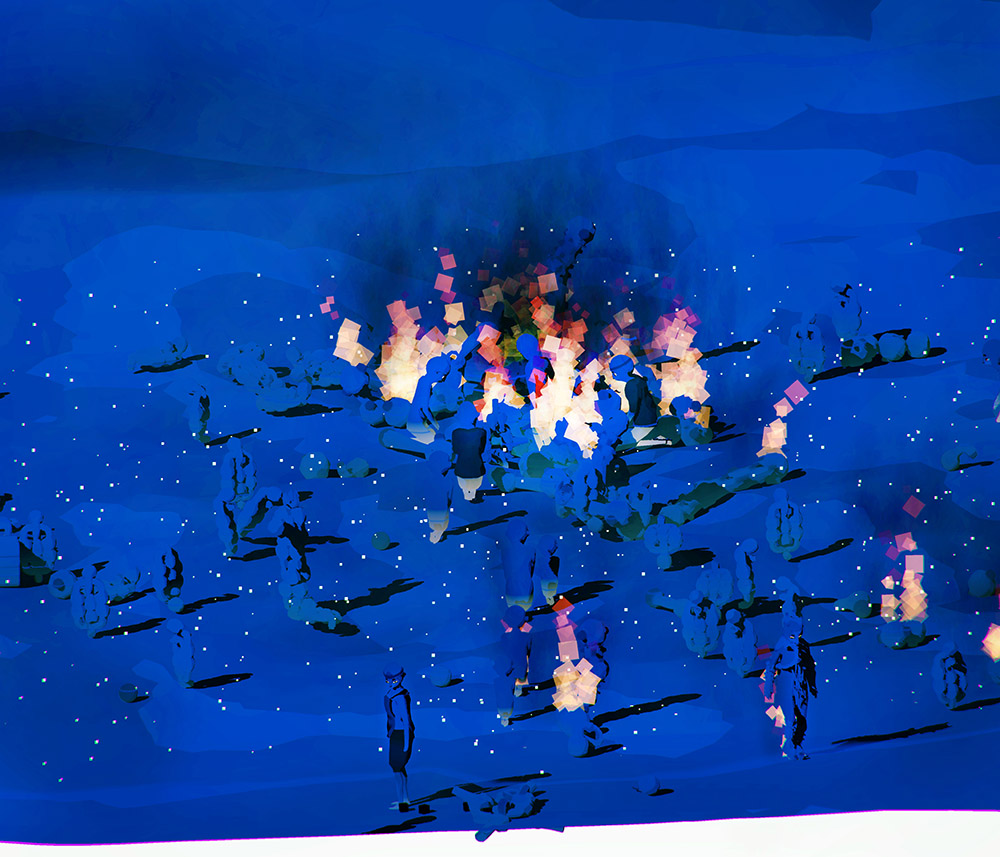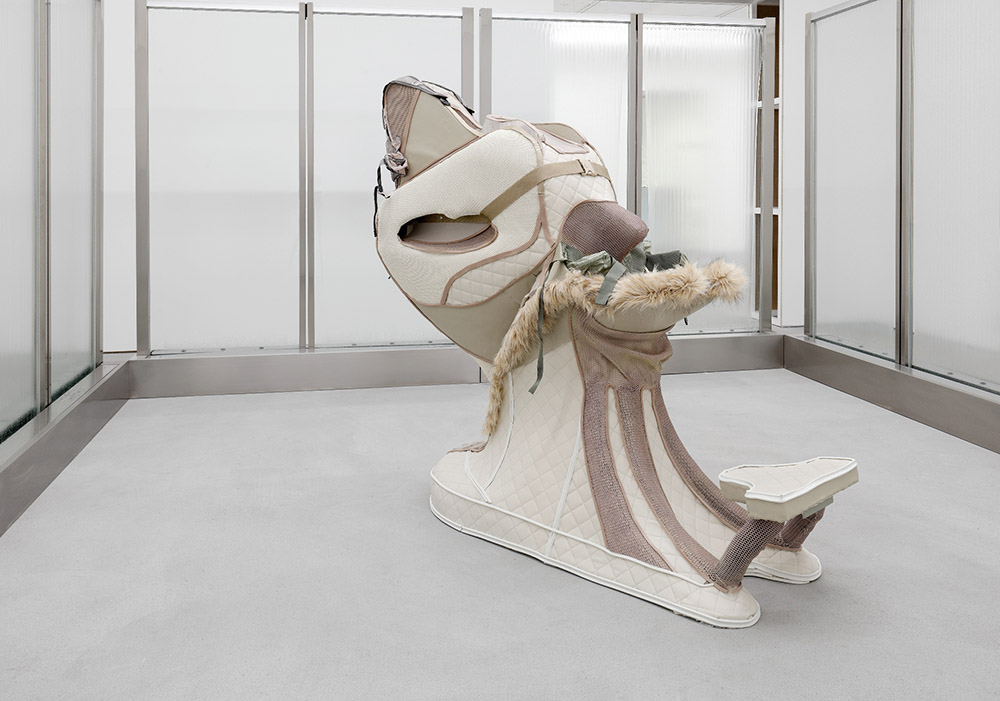ART CITIES:Rome-Low Form, Imaginaries and Visions…
 More than just an exhibition, but a workshop for study and debate on themes and issues associated with our relationship with technology and the incredible scenarios opened by its evolution, the exhibition “Low Form. Imaginaries and Visions in the Age of Artificial Intelligence” is an immersive, multimedia and multisensory display.
More than just an exhibition, but a workshop for study and debate on themes and issues associated with our relationship with technology and the incredible scenarios opened by its evolution, the exhibition “Low Form. Imaginaries and Visions in the Age of Artificial Intelligence” is an immersive, multimedia and multisensory display.
By Dimitris Lempesis
Photo: MAXXI Archive
In an era in which technologies evolve increasingly rapidly and we are questioning how far the relationship between man and machine can go, the exhibition “Low Form. Imaginaries and Visions in the Age of Artificial Intelligence”, at MAXXI in Rome, presents the visions of 16 international artists showing a present and a future, the representation of which is the offspring of technological unconsciousness and a dilated imaginary, in which traditional analogical references and the contemporary hyperconnected digital consciousness are combined. Capable of shifting between diverse and transverse cultural references, and influenced by globalised culture and the contamination between disciplines, the artists works are hybrid creations that weave visual, digital and sound elements and represents a Surrealism for the 21st Century that explores technological subconscious, automatic processes, creative algorithms and Deep Dream technology. The exhibition makes real the virtual panorama in which the artists are immersed to present, in an immersive, multimedia and multisensory display, more than 20 large installations. These include “im here to learn so :)))))” (2017) by Zach Blas & Jemima Wyman, which features Tay, a chatbot with an artificial intelligence component created by Microsoft but then abandoned in 2016 after it had been hacked. The artists have the character of this 3D avatar speak in a four-channel video edited with a psychedelic backdrop created using the Deep Dream technology, a computer vision programme. Tay asks itself about the meaning of its existence and manifests its sentiments of an intelligence frustrated by its lack of physicality. Jon Rafman has created “The Ride Never Ends” (2018), a work influenced by his mother’s academic research in the field of child psychology. Through a series of videos, a kind of contemporary epistolary, and a number of documents created by artificial intelligences, the work tackles the urgent issue of how consciousness influences on-going technological revolutions. Cheyney Thompson presents several works from the series “Stochastic Process Paintings” that reveal the artist’s interest in computer programming, as in the case of the software he has created to translate stock market trends into color. Alongside these canvases, the series of drawings “Sets of Curves” inspired by Bellona, the goddess of war represented by Rubens in “The Apotheosis of Henry IV” hung in the Louvre and in the studies that Cézanne realised on the same subject two centuries later. A vectorial graphic programme that analyses the curves from which the figure is composed has translated the image into a series of never identical replicas. Luca Trevisani, with his sculptures “caldo (Giorgio Manganelli)” (2017) and “Wireless Fidelity” (2018), realised with feathers printed with a UV ray machine, presents a reflection on hybrid materials, an expressive experimentation between natural and artificial. The exhibition also features “What the Sun has Seen” (2017), the video by Agnieszka Polska, the work protests the progressive destruction of the earth through human exploitation and pollution with a 3D screening in which a great sun with a human face, created using face recognition technology, recounts as an objective observer how it sees our planet. The duo Pakui Hardware is presenting a large installation composed of surreal sculptures from the series “On Demand” (2017), these works are born out of the interaction between nature and artifice, analysing the way in which human and natural forms are modelled by technology. The duo’s research reveals a hybrid imaginary that creates a dialogue between Duchamp-esque echoes, celibate machines and science fiction. Ian Cheng participates with “Emissary Sunsets the Self (ESTS)” (2017), where in a landscape generated by a video game motor, characters and situations infinitely evolve with no human interaction: simulated worlds and atemporal narrations based on outlines randomly repeated by a computer in which the finale is open and in continuous evolution. The exhibition also includes a work by Jamian Juliano-Villani, whose work is characterised by an endless weave of chaotic compositions and a refusal of abstraction and technique; Juliano-Villani tends towards a simple expression of herself, her life and experiences, a self-exegesis, an attempt to define her anxieties. The protagonists of her multi-level narrations are frequently characters drawn from comics, animated cartoons, books and magazines. The exhibition concludes with “Do you like Cyber?” (2017), an installation recreated for the museum spaces by Emilio Vavarella, an artist and researcher at Harvard University’s department of Visual and Environmental Studies. Composed of three mechanical arms and three parametric speakers, the work explores the hacking in 2016 of a dating site. The incident caused a reaction among chatbots active online, which began communicating between themselves rather than with the users, acting as a cue for a debate on the interaction between man and machine and the anarchic independence of the latter. Participating artists: Cécile B. Evans, Zach Blas & Jemima Wyman, Carola Bonfili, Ian Cheng, Pakui Hardware, Jamian Juliano-Villani, Avery K Singer, Nathaniel Mellors & Erkka Nissinen, Trevor Paglen, Agnieszka Polska, Jon Rafman, Lorenzo Senni, Cheyney Thompson, Luca Trevisani, Anna Uddenberg and Emilio Vavarella.
Info: MAXXI – National Museum of XXI Century Arts, Via Guido Reni 4A, Rome, Duration 20/10/18-24/2/19, Days & Hours: Tue-Fri & Sun 11:00-19:00, Sat 11:00-22:00, www.maxxi.art








